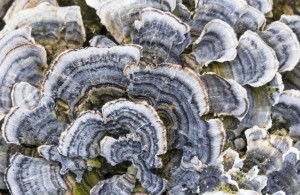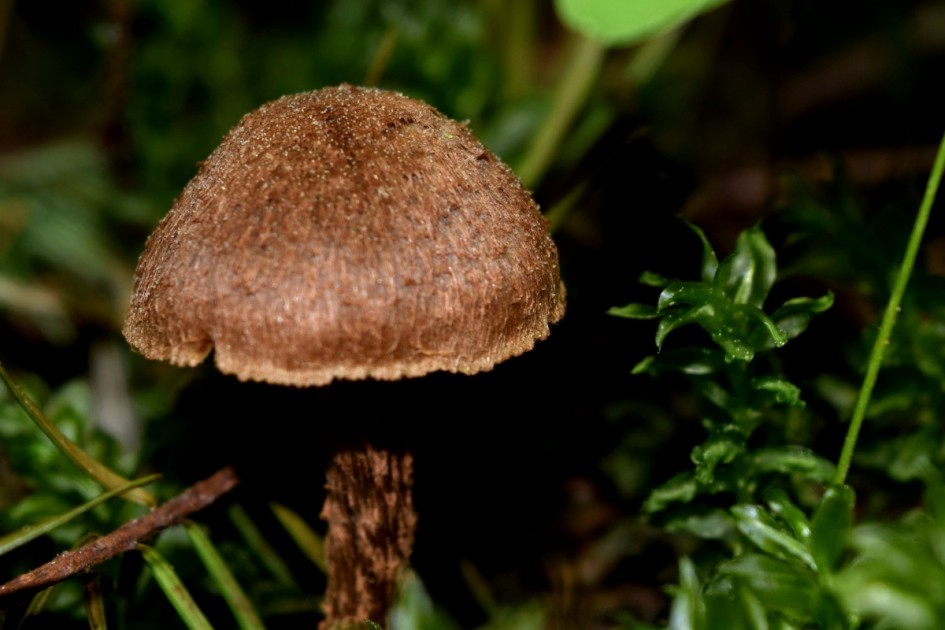What is the first thing you think of when you hear the word mushroom? I know for me before I started my research was one of two things: a psychedelic or the kind of mushroom you can find on the store shelves. I am a current student at The Evergreen State College doing a research project on the decomposition of different substrates (different trees) and the effects on plant growth in that community. After talking to my partners who are, to say the least “mushroom fanatics” this project got me thinking about fungi and how they could help people. So I decided to do some digging into what fungi can actually do.
Upon many hours of research I found out that certain mushroom have medicinal benefits but what specific mushrooms possess these medicinal powers? There have been many interesting recent discoveries showing the vast medicinal purposes that different mushroom species have and here you can see for yourself one of many success stories. Here is a little of what I found.
Paul Stamets, a world renowned mycologist and author out of Washington state, has been studying fungi for over 40 years. I would consider him to be one of the modern forefathers of fungal research (although i’m new to the fungi world). From the above link you might have noticed the man in the video was in fact Paul Stamets. The turkey tail mushroom (Trametes versicolor) taken daily in capsule form which supplements radiation therapy or chemotherapy can boost immunity in women being treated for breast cancer.[1] A seven year study conducted by researchers at the University of Minnesota and at Bastyr University showed that the improved immune response was dose dependent and that none of the patients had suffered any adverse effects.[2] With more research this could ultimately be a great alternative to the nasty effects of radiation therapy or chemotherapy.

Turkey Tail Mushroom Photo taken by: Liz West
Another notable medicinal fungi is the Ling Zhi (in Chinese) or Reishi (in Japanese) mushroom (Ganoderma lucidum) which has also been used for its immune boosting properties. [3] Some have even gone as far as to call the Reishi the “mushroom of immortality”. This mushroom has been curing what ails you and has been documented as a medicine in ancient Chinese scripts for over 2000 years. [4] The Reishi can also change your stomach bacterium for the better and can reverse the symptoms of obesity and insulin resistance. Eating an extract of this miracle mushroom can slim you down by nourishing healthy bacterium in your stomach flushing out the old. The bacterium it creates also helps combat viral infections (influenza), Swine flu (H1N1), Avian flu (H5N1) and herpes virus (HSV1, HSV2). It has also been used as a successful anti-inflammatory, anti-tumor agent as well as an immunomodulator.

Reishi Mushroom
Photo taken by: Eric Steinert
Did you know humans and fungi are closely related. Even though only by appearance one would think fungi is more so related to plants but you would be wrong. “Family trees” (phylogeny) show that fungi share a larger portion of their genes with animals than they do with plants. [6] Animals and fungi are both heterotrophic meaning they cannot produce their own food. Plants on the other hand are autotrophic meaning they produce their own food by means of photosynthesis. Animals and fungi also breath oxygen and produce carbon dioxide whereas plants take in carbon dioxide and release oxygen. By studying what viruses and bacteria affect fungi we can get a good understanding on how these same viruses and bacteria affect humans.

Phylogenetic tree showing animals, fungi and plant relationships.
There are likely more than 5 million different types of fungal species on earth with a very low percentage actually studied on. Could it be possible that by studying more species of fungi that we could help prevent or cure multiple diseases on earth? I definitely like to think so. The few fungal species I have covered in this blog barely scratch the surface of what could be the future of medicine. Try to think beyond stereotypes of mushrooms and maybe next time you are sitting at the dinner table, on a hike in the forest, or even thinking about mushrooms you should consider the many health benefits they might give you. They just might save your life some day.
Literature Cited:
- Szeto MO. Coriolus versicolor extracts: clinical relevance in cancer management. Current Oncology Curr. Oncol. [Internet]. 2008;15(2): 41–47. Available from: http://www.current-oncology.com/index.php/oncology/article/view/147/209
- Anon. FDA Approves Bastyr Turkey Tail Trial for Cancer Patients. FDA Approves Turkey Tail Trial for Cancer Patients [Internet]. 2012 Nov 30 [cited 2016 Apr 24]. Available from: http://www.bastyr.edu/news/general-news/2012/11/fda-approves-bastyr-turkey-tail-trial-cancer-patients
- Stamets P. Growing gourmet and medicinal mushrooms =. Berkeley, CA: Ten Speed Press; 2000.
- Arora D. Mushrooms demystified: a comprehensive guide to the fleshy fungi. Berkeley: Ten Speed Press; 1986.
- Benzie IFF, Wachtel-Galor S. Herbal medicine: biomolecular and clinical aspects. 2nd ed. Boca Raton: CRC Press; 2011. Chapter 9. Available from: http://www.ncbi.nlm.nih.gov/books/NBK92757/
- Carr M, Baldauf SL. 1 The Protistan Origins of Animals and Fungi. Evolution of Fungi and Fungal-Like Organisms [Internet]. 2005 Sep 8: 3–23. Available from: http://mbe.oxfordjournals.org/content/23/1/93.full

Leave a Reply